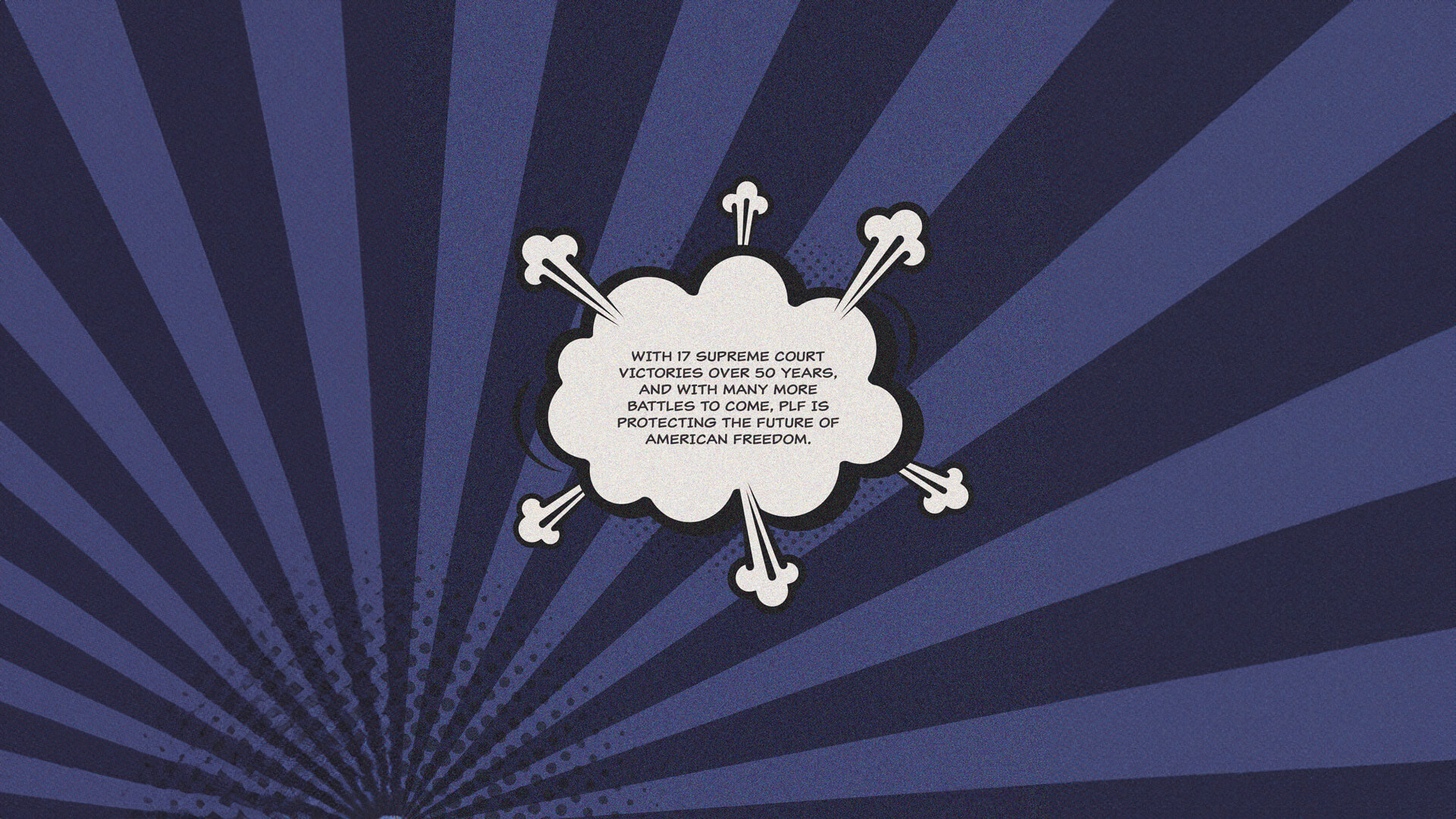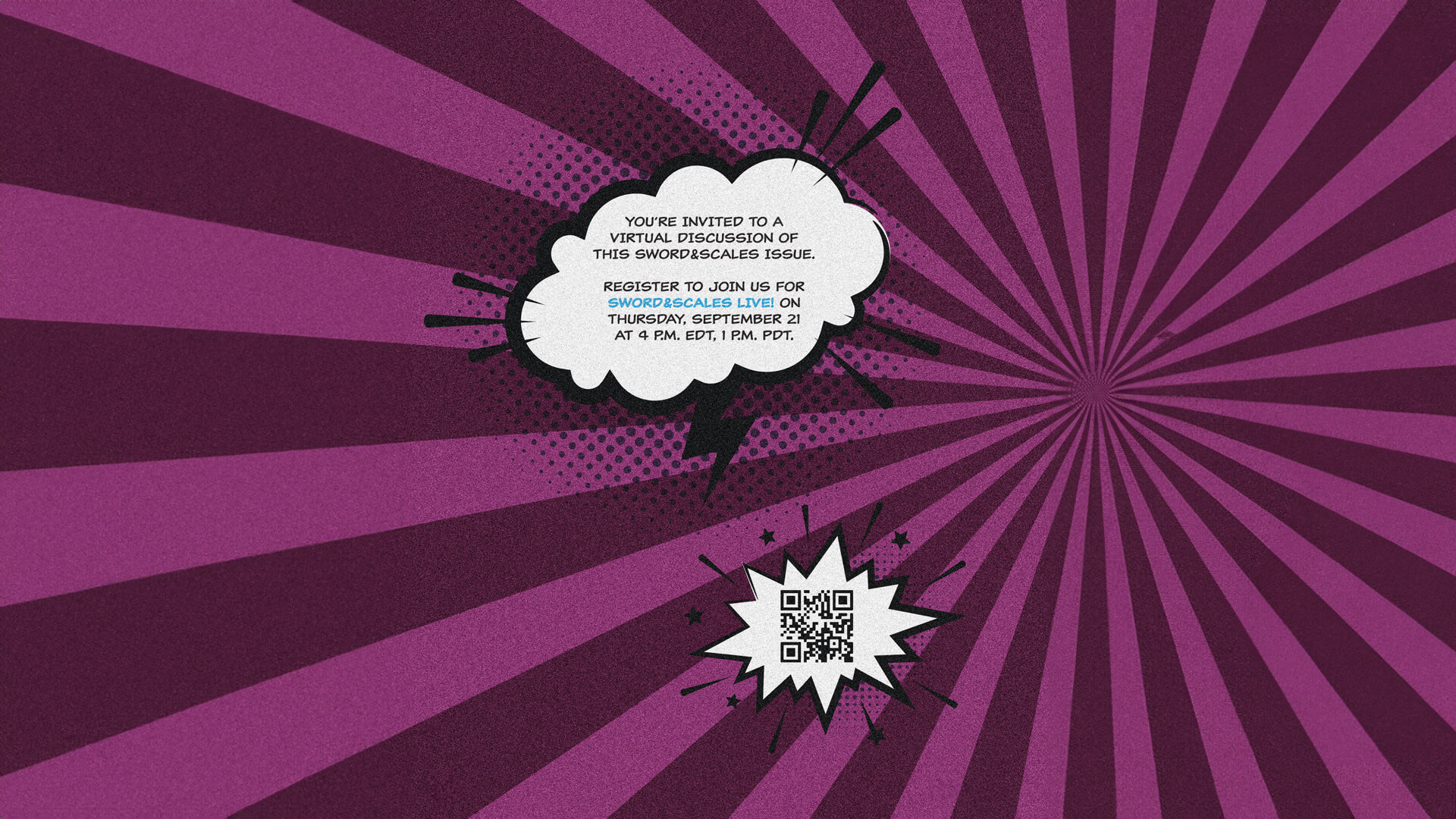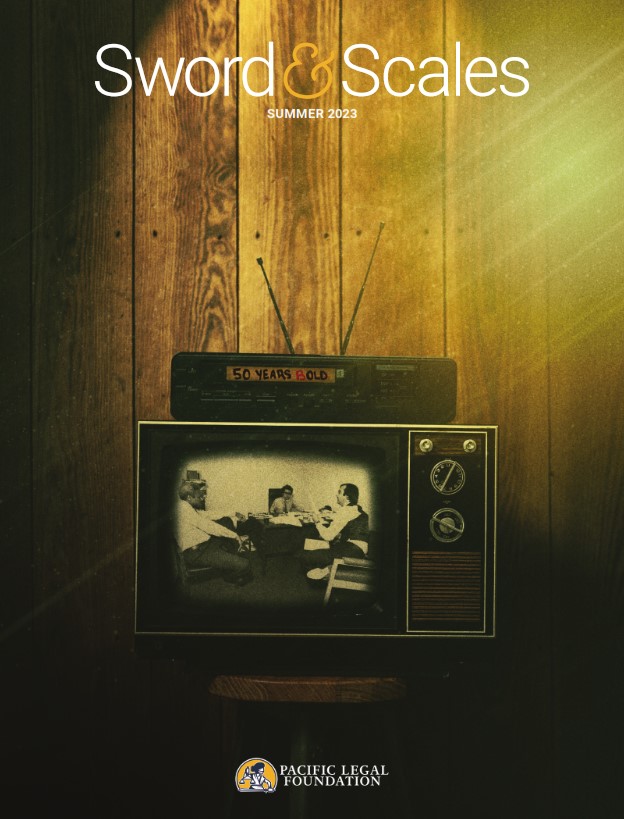
Before moving to California to join Pacific Legal Foundation, my family and I lived in DC on Capitol Hill. One of the wonderful benefits of living there is the easy accessibility to monuments, memorials, and buildings where important—often historic—things happen.
But as close as the Supreme Court was to our rowhouse, we’d never been inside the building together.
We remedied that in March: As part of PLF’s 50th anniversary celebration, I accompanied my wife and two sons on a tour of the Supreme Court. We were allowed to linger in the majestic courtroom, soaking in its splendor and gravitas. It dawned on me that not only were my DC-born sons seeing the home of one of the government’s three co-equal branches, they were also seeing where I often get to work.
I’ve been fortunate to witness many arguments in the Supreme Court courtroom (Supreme Courtroom?) throughout my public interest legal career and from a number of vantage points—counsel’s table, the Supreme Court Bar member section, and the general audience. It probably comes as no surprise to readers of Sword&Scales that the vast majority of my attendance is the product of PLF’s prowess at the Supreme Court.
All told, I’ve seen the Justices consider PLF cases nearly a dozen times since I arrived at PLF seven years ago, covering a variety of topics: property rights, environmental and administrative law, the First Amendment, and civil procedure.
But my record pales in comparison to PLF’s. The Supreme Court’s heard 19 of our cases—and we’ve been successful 17 times. We’re among the most effective Supreme Court advocates in nonprofit, public interest history. Among those with repeat performances, our winning percentage is one of the highest. And in this past term, we had as many wins—three—as any law firm period, including billion-dollar multinationals, demonstrating our Supreme Court practice can match up against anyone.
Not only that, but we also present our cases in a way that allows us to obtain support across the ideological spectrum. Of our 17 victories, nine of them have been unanimous. Of the three this past term, two were unanimous and the third was a 6-3 decision written by Justice Sonia Sotomayor. While it’s true that we see the world through a certain lens, it’s equally true that the values around which we build our work are universal.
Of course, we can’t get to the Court—let alone win—without our clients. It’s their unique stories, their perseverance, their personalities, and their commitment to principles that both attract the attention of the Supreme Court and drive us to work so hard on their behalf. Plus, they’re fun. Whether it’s the Murr family making sure your pint glass never nears empty or Wil Wilkins enthralling the staff with cowboy poetry, there’s a permanent bond, and not just because each case will make it into a future textbook or classroom. It’s permanent because together we’re changing the future.
There are very few jobs in this world where you can actually shape what happens over the horizon. PLF is one of those places. And in a world where things can sometimes look bleak, I take comfort and confidence in knowing that the idea of individual liberty—and all the blessings that flow from it—is vindicated with every PLF win and that the promises made in our founding documents get closer to being fulfilled with each Supreme Court term.
Another term begins in October, and you can be sure we’ll be presenting the Court with ever-more cases designed to ensure we all get to pursue our own happiness. And you can bet we’ll make history again.

Steven D. Anderson
President & CEO
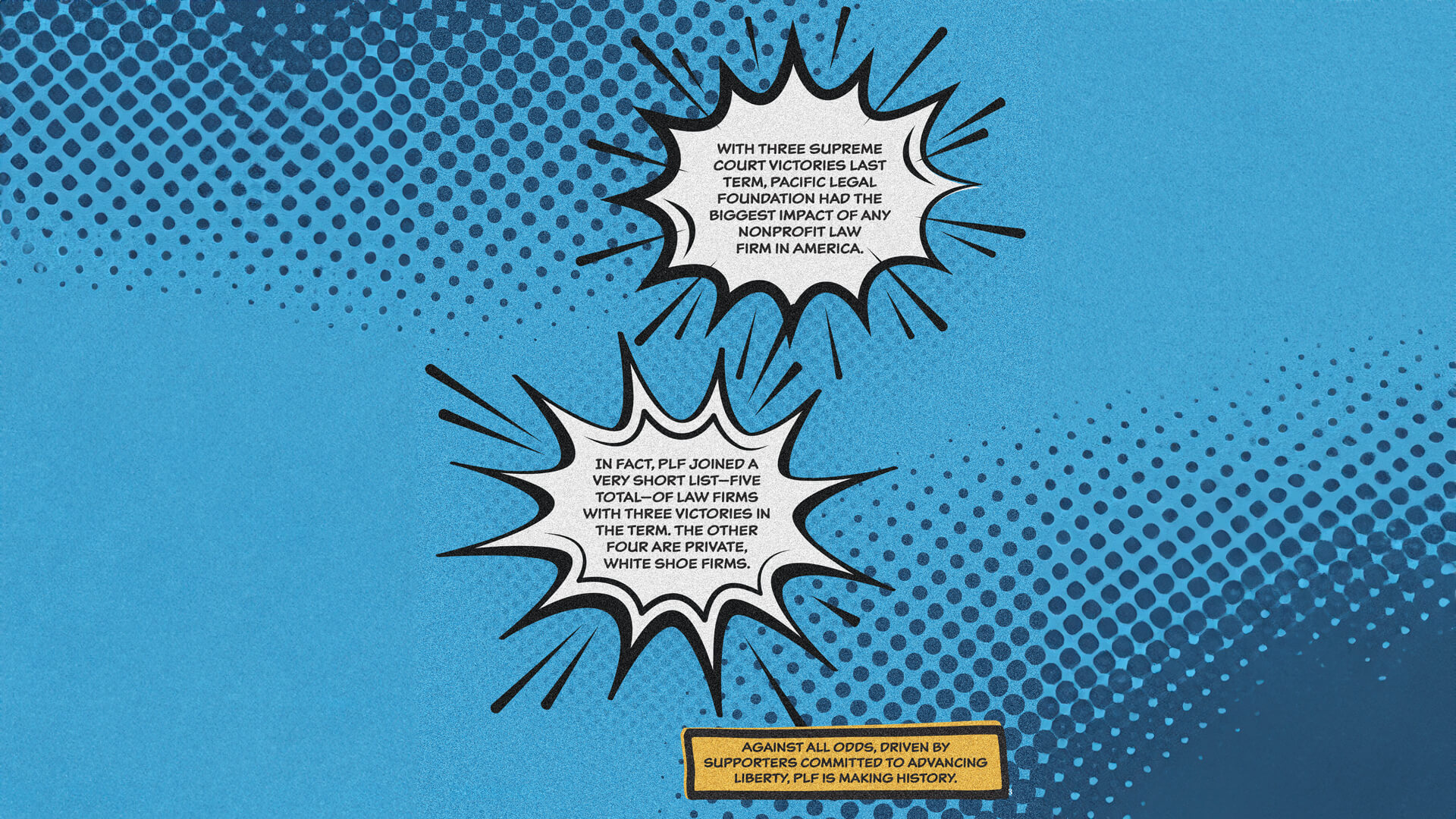
PLF Wins Three Supreme Court Victories in Historic Term for Liberty
No other public interest law firm in the country
achieved what Pacific Legal Foundation did last term.
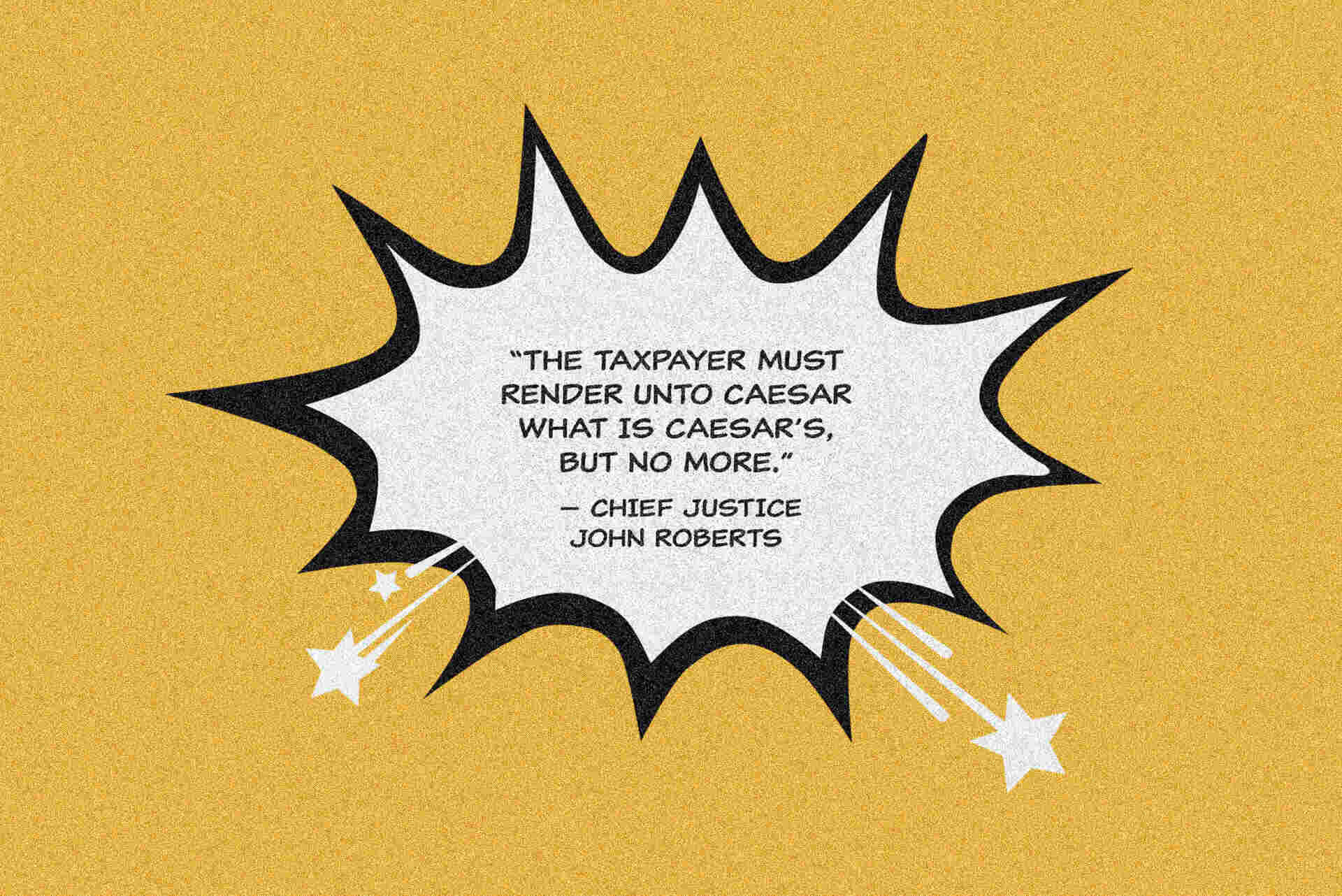
Wilkins v. United States
A 6-3 victory for PLF clients Wil Wilkins and Jane Stanton
THE ISSUE
The Quiet Title Act allows property owners to resolve disputes with the federal government. But when elderly blacksmith Wil Wilkins and his neighbor Jane Stanton tried to sue the Forest Service over an easement bait-and-switch, a federal court said the statute of limitations had lapsed—and that the court therefore couldn’t review the case, even to consider evidence that the statute hadn’t lapsed at all.
The Supreme Court agreed to consider whether people like Wil and Jane can still bring claims against the federal government.
THE DECISION
Calling the government’s arguments “unavailing,” a 6-3 majority held that the Quiet Title Act’s statute of limitations was non-jurisdictional—meaning Wil and Jane can go to federal court to argue that their claims should be heard and resolved.
THE IMPACT
The decision leveled the playing field for property owners across the country, particularly in Western states where the federal government owns about half the land. “At a big picture level,” SCOTUS blog wrote, the Wilkins decision “limit[s] the ability of the federal government to use these ‘technicalities’ to avoid scrutiny in litigation of its activities.”

Sackett v. EPA II
A 9-0 victory for PLF clients Chantell and Mike Sackett
THE ISSUE
The Clean Water Act gives the Environmental Protection Agency and Army Corps of Engineers jurisdiction over “navigable waters.” But over decades, the two agencies stretched the definition of navigable waters to include “semi-soggy” parcels of residential land.
In their 2012 Supreme Court victory, Chantell and Mike Sackett won the right to challenge the EPA’s designation of their small plot as navigable waters. After a decade of litigation in lower courts, the Supreme Court agreed to consider the question at the heart of the Sackett case: What are the limits on Clean Water Act enforcement?
THE DECISION
In a 9-0 judgment, all nine Justices held that the Clean Water Act does not apply to land like the Sacketts’. In the majority opinion, five Justices ruled that “the CWA extends to only those wetlands with a continuous surface connection to bodies that are “waters of the United States” in their own right, so that they are ‘indistinguishable’ from those waters.” The decision essentially made former Justice Antonin Scalia’s plurality opinion in Rapanos—a 2006 PLF victory—the law of the land.
THE IMPACT
The Sackett II decision was immediately hailed as a “landmark for liberty” (Wall Street Journal editorial board) that “buttressed the rule of law” (Washington Post columnist George Will). By returning the Clean Water Act to its original purpose, the Supreme Court freed up millions of acres of buildable land and reined in the administrative state.
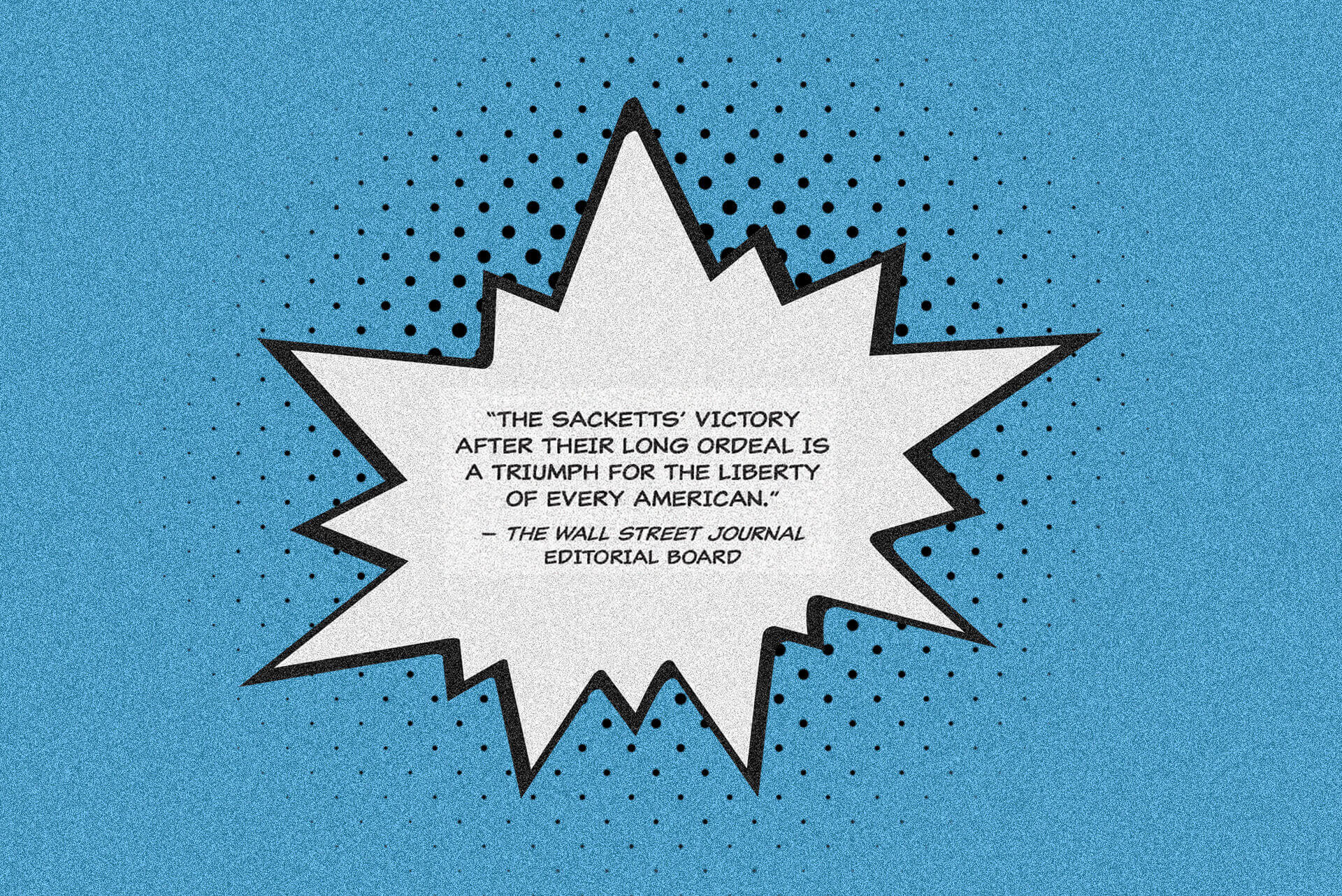
Tyler v. Hennepin County
A 9-0 victory for PLF client Geraldine Tyler
THE ISSUE
Across the United States, local governments are allowed to foreclose on private homes and land to settle owners’ outstanding property tax debts. But the government shouldn’t be allowed to keep more than is owed.
Hennepin County seized the one-bedroom condo of Minneapolis grandmother Geraldine Tyler as payment for approximately $15,000 in back taxes, costs, interests, and penalties. The County auctioned the property for $40,000 and kept it all for various public purposes—a clear violation of Geraldine’s Fifth Amendment rights.
THE DECISION
In a unanimous decision, the Supreme Court held that the government cannot take a windfall at the expense of property owners. The Court explained that property rights are fundamental and cannot be erased by a state statute that redefines them out of existence. “[P]roperty rights cannot be so easily manipulated,” Chief Justice John Roberts wrote in the opinion, quoting his own previous majority opinion in Cedar Point Nursery, a 2021 PLF victory.
THE IMPACT
Because of the Tyler decision, 21 states must change their laws to ensure surplus proceeds from tax foreclosures are returned to the homeowners. Countless struggling Americans have been rescued from future home equity theft: A Pacific Legal Foundation study found that before Tyler, about three American families every day fell victim to the unconstitutional practice.
Tyler “sets a significant precedent,” notes Ilya Somin, law professor at George Mason University. First, it forces states to stop stealing home equity. “In addition, the holding that states cannot just redefine property rights at will has important implications for other property rights issues,” Somin says.
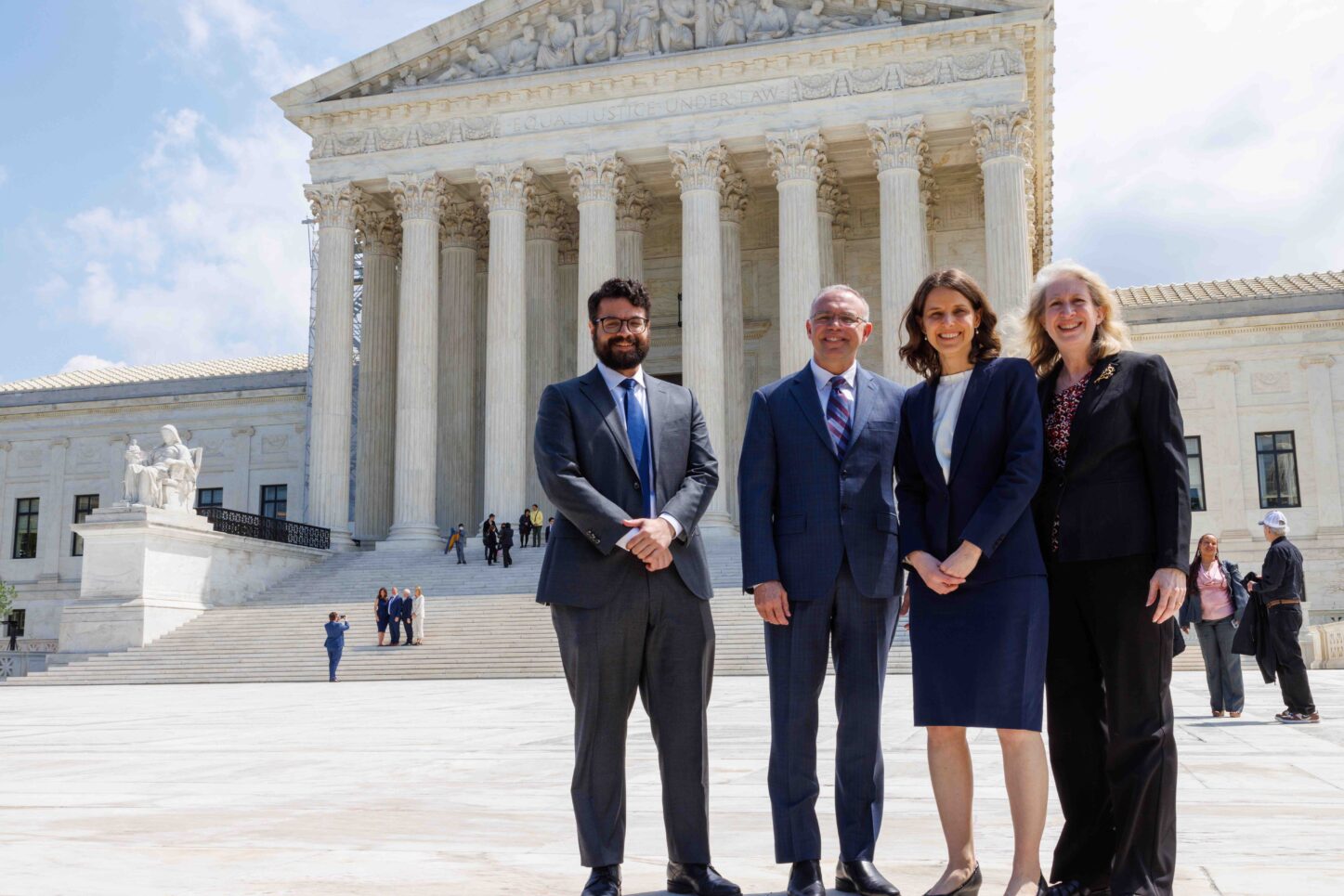

The Power of the Court: Now and Then

Damien Schiff
Senior Attorney
NOW
THE MORNING AFTER the Supreme Court ruled in favor of Mike and Chantell Sackett—Pacific Legal Foundation clients who battled the Environmental Protection Agency (EPA) for 16 years over their half-acre property—NPR’s Morning Edition said the Sackett ruling seemed “different, more lasting” than other rulings.
“Generally, in all cases, the Supreme Court lets federal agencies decide how they want to interpret law,” an NPR correspondent explained. Not in Sackett, he said: This time, all nine Justices agreed that the EPA crossed the line when the agency tried to use the Clean Water Act to block housing on the Sacketts’ occasionally soggy plot of land.
NPR’s correspondent found it “alarming” that the Court ruled against the EPA. After all, he said, “agencies are where subject-matter experts are.” He interviewed Cara Horowitz, an environmental law expert at the University of California, Los Angeles. Horowitz was indignant about the Court’s decision.
“This Court is quite explicitly arrogating to itself the power to say what the law is, and taking discretion away from agencies,” she complained.
THEN
On February 24, 1803, Chief Justice John Marshall stood in the parlor of Stelle’s Hotel in Washington, DC, and read aloud the Supreme Court’s 9,300-word decision in Marbury v. Madison.
“It is emphatically the province and duty of the Judicial Department to say what the law is,” Chief Justice Marshall said.
Washington had been buzzing about the case for two years. The decision was not what anyone expected.
Two years earlier, in 1801, Thomas Jefferson had been elected president. It was the first American election in which the presidency changed hands from one party (John Adams’ Federalist Party) to another (Jefferson’s Democratic-Republican Party). Before leaving office, President Adams hastily nominated several judges and justices of the peace. One of those justices of the peace was a Maryland businessman named William Marbury.
Marshall himself had signed the commissions at the end of his short stint as President Adams’ secretary of state. The day before Jefferson’s inauguration, Marshall tasked his brother, James, with delivering the last-minute commissions. But James couldn’t carry all of them, so he left some behind in his brother’s office—including Marbury’s.
The day after the inauguration, President Jefferson discovered the undelivered commissions at the State Department. He instructed his new secretary of state, James Madison, not to deliver them. “If there is any principle of law never yet contradicted,” Jefferson later reasoned, “it is that delivery is one of the essentials to validity of the deed.”
William Marbury sued in December 1801. He wanted the Supreme Court to issue a writ of mandamus forcing Jefferson’s administration to deliver his commission.
Jefferson’s supporters were furious that the Justices, led by Adams’ former secretary of state, might overrule the new president.
This was a crucial moment for the young Supreme Court, and for Chief Justice Marshall in particular. Jefferson’s supporters were furious that the Justices, led by Adams’ former secretary of state, might overrule the new president. When the Supreme Court agreed to hear Marbury’s case, one Federalist-friendly newspaper accused the Court of taking “a bold stroke against the Executive authority of the government.” A senator from Georgia called it “the most daring attack.” Virginia’s governor described it as “a high-handed exertion of Judiciary power.”
And this was all just for agreeing to hear the case.
NOW
A RISING TIDE OF ANGER is calling for changes at the Supreme Court.
After the end of the Supreme Court term in June 2023, two law professors published an open letter to President Joe Biden, telling him he should start ignoring the Court’s decisions.
Attacks on the Court’s legitimacy have been ongoing since the Dobbs abortion decision last year—and they increased after the Court’s decisions on the Clean Water Act, affirmative action, and student loan forgiveness.
The Court “has blown through the guardrails courts are expected to observe,” The New York Times editorial board argued after Sackett.
The Washington Post’s Jennifer Rubin accused the Court of “undermining democracy to an extent we have not seen in nearly 100 years.”
Mark Joseph Stern said on Slate’s podcast that the Court “has given itself basically an infinite number of tools to override the words that Congress wrote.”
Congresswoman Ayanna Pressley told MSNBC the Justices are “overturn[ing] the will of the majority.”
When asked about the Court’s ruling on affirmative action, President Biden said, “This is not a normal Court.”
THEN
The Supreme Court didn’t have a dedicated courtroom in 1803.
The Justices usually heard cases and announced decisions from a small committee room in the Capitol Building. During the term, the Justices roomed together at Stelle’s, the hotel and boarding house across the street from the Capitol. Stelle’s was busy that February. One night the hotel parlor was filled by the Washington Dancing Assembly. On some days one of the guests, a popular traveling dentist, would treat patients in his room.
Justice Samuel Chase, nicknamed “Old Bacon Face,” suffered from painful gout. By mid-February he couldn’t walk across the street from Stelle’s to the Capitol anymore. It was a problem for Marshall: Two of the Court’s six Justices were already absent with illnesses, and without Chase, the Court wouldn’t have a quorum.
So the Chief Justice decided to start doing Supreme Court business from the parlor of Stelle’s Hotel.
Marshall was not a man who valued pomp and ceremony. He was the oldest of 15 children and had no formal schooling. While many early American judges wore red robes, mimicking the style worn in England, Marshall wore black.
As he stood in Stelle’s parlor on February 24, Marshall knew the decision he held in his hands—Marbury v. Madison—would cause a stir. It had been delayed after congressional debate over the role of the judiciary—sparked by the Court’s intent to hear Marbury’s case—resulted in a bill that suspended the Supreme Court term for a year. (One congressman asked, “Are the gentlemen afraid of the judges?”)
Marshall was largely quiet, unwilling to respond to criticism or speculation about how the Court would rule in Marbury. At a celebration of George Washington’s birthday on February 22, after someone toasted to “an independent judiciary,” Marshall rose and gave a pointed toast to “those few real patriots who love the people well enough to tell them the truth.”
NOW
As the Supreme Court announced its decisions in 2023, The New York Times published a feature comparing certain decisions with public polling, broken down by political affiliation. The feature seemed designed to further suspicions the Court was making political decisions.
“The fanatical MAGA right have captured the Supreme Court and achieved dangerous, regressive policies,” New York Senator Chuck Schumer told the Times.
“The right wing has outsourced legislating to the Supreme Court,” Connecticut Senator Chris Murphy said on MSNBC.
Some online commentators responded to Murphy by arguing that it was progressive Justices who inappropriately legislated from the bench throughout the 20th century. The current Court is just undoing those mistakes and reasserting the true role of the judiciary, the commentators argued—the power to say what the law is.
THEN
WHEN MARSHALL ANNOUNCED the Court’s unanimous Marbury v. Madison decision, he noted the “peculiar delicacy” of the case.
William Marbury had a right to his commission, Marshall said, and he should have a legal remedy. “The very essence of civil liberty certainly consists in the right of every individual to claim the protection of the laws, whenever he receives an injury,” Marshall wrote in the decision.
And yet the Court was not going to issue a writ of mandamus forcing Jefferson to honor Marbury’s commission.
Instead, the Court found that the law Marbury relied on to bring his case to the Supreme Court—Section 13 of the Judiciary Act of 1789—was unconstitutional. It granted the Supreme Court original jurisdiction in cases beyond what the Constitution allows.
For the Court, the Constitution is paramount, Marshall explained in the decision. If a law violates the Constitution, the Court cannot follow it or allow it to stand. The judicial branch says what the law is.
He concluded:
Why does a judge swear to discharge his duties agreeably to the Constitution of the United States if that Constitution forms no rule for his government? … [T]he particular phraseology of the Constitution of the United States confirms and strengthens the principle, supposed to be essential to all written Constitutions, that a law repugnant to the Constitution is void, and that courts, as well as other departments, are bound by that instrument.
With a single decision, the Supreme Court simultaneously asserted the power of judicial review and demonstrated its own restraint. It hadn’t forced Jefferson to honor Marbury’s commission—even though the Justices clearly believed Marbury had a right to the post. It set aside part of a law—even though the law broadened the Court’s own jurisdiction.
“The partisan newspapers were not quite sure how to react to the judgment,” Cliff Sloan and David McKean write in The Great Decision. “The Supreme Court had found an act of Congress unconstitutional—but it had done so by limiting its own power.”
With a single decision, the Supreme Court simultaneously asserted the power of judicial review and demonstrated its own restraint.
NOW
TWO HUNDRED AND TWENTY YEARS later, politicians and commentators are still grappling with the Supreme Court’s power to interpret the law.
For many on the Left, the fact that six Justices were appointed by Republican presidents is taken as proof the Court isn’t fair-minded. Any decision that runs counter to progressives’ agenda—on the Clean Water Act, affirmative action, and student loan forgiveness—is slammed as a politically motivated power grab from a radical institution.
“Six radical Justices are imposing their extremist views on the entire country—against the will of the American people,” Senator Elizabeth Warren said. “Congress must protect our democracy from this rogue Court.”
And yet ironically, in virtually every case, it was the Court’s critics who wanted to imbue it with new, politicized power—the power to read into the law something absent in the Constitution in order to advance certain goals.
When a law is vague—like the Clean Water Act—it is emphatically the role of the Supreme Court to “say what the law is.”
In the case of Sackett, as Justice Clarence Thomas said in his concurrence, the federal government “possesses no authority over navigable waters except that granted by the Constitution.” If the Court were to allow the EPA’s overbroad interpretation of the Clean Water Act to stand, “the only prudent move for any landowner in America would be to ask the Federal Government for permission before undertaking any kind of development,” Thomas wrote. That would be a far more radical reading of the law than what the Court majority ruled.
When a law is vague—like the Clean Water Act—it is emphatically the role of the Supreme Court to “say what the law is.” That’s not the radical fever-dream of a modern institution gone rogue; it’s the precedent set by Chief Justice John Marshall in Marbury and established beforehand by America’s founders, who relied on centuries of common law that came before them.
Alexander Hamilton wrote in 1788,
The interpretation of the laws is the proper and peculiar province of the courts. A constitution is, in fact, and must be regarded by the judges, as a fundamental law. It therefore belongs to them to ascertain its meaning, as well as the meaning of any particular act proceeding from the legislative body.
That’s the Supreme Court’s mandate, whether people like its decisions or not. As Chief Justice John Roberts said in response to recent attacks on the Court,
You don’t want the political branches telling you what the law is. And you don’t want public opinion to be the guide of what the appropriate decision is. Yes, all of our opinions are open to criticism. In fact, our members do a great job of criticizing some opinions from time to time. But simply because people disagree with an opinion is not a basis for criticizing the legitimacy of the Court.♦
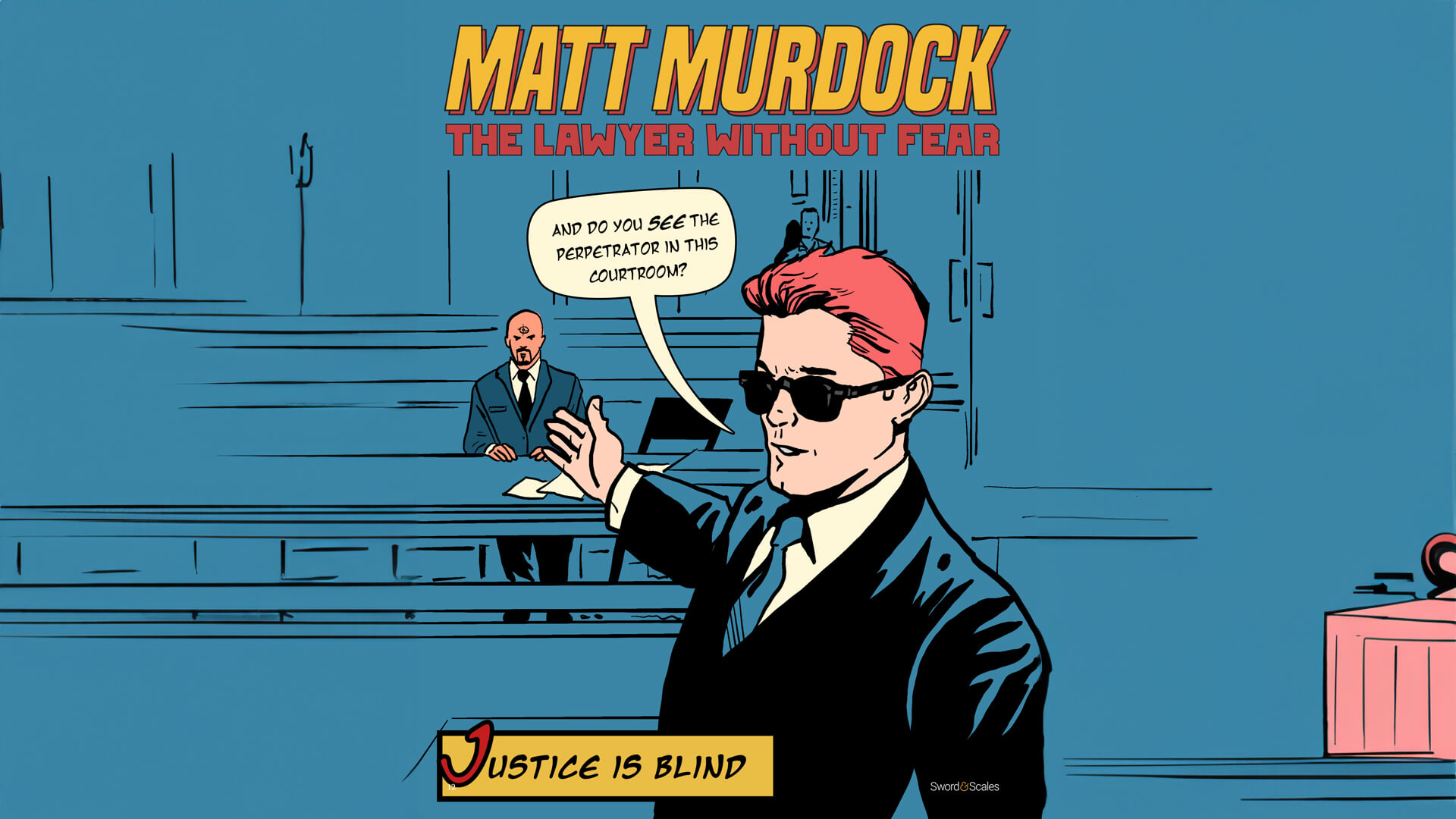
Ending Elite Schools’ Race Obsession

Brittany Hunter
Editorial Writer

Ethan Blevins
Legal Fellow
SHOUTING COULD BE HEARD just outside the Supreme Court one Thursday afternoon in June, as two groups of protestors gathered in response to the Justices’ latest ruling.
The crowd wasn’t large—fewer than 100 people—but tensions were high, exacerbated by the scorching Washington, DC, heat.
On one side, protestors blasted music on a portable speaker, yelled through a megaphone, and held up “Yes! Affirmative Action” signs. On the other, a group of parents and students stood behind a banner that read “Stop Asian American Discrimination.” Each group was trying to drown out the other.
Less than an hour earlier, the Supreme Court had issued its joint decision in Students for Fair Admissions v. Harvard and Students for Fair Admissions v. University of North Carolina, two consolidated cases that challenged race-based admissions in higher education.
In a 6-3 vote, the Court ruled that Harvard and UNC’s respective admissions processes, which favored some races over others, violated the Fourteenth Amendment’s Equal Protection Clause—signaling the end of affirmative action.
Students for Fair Admissions v. Harvard
THE DECISION WAS NINE YEARS in the making. In 2014, a group called Students for Fair Admissions (SFFA) filed a lawsuit against Harvard, alleging that the Ivy League institution’s admissions process discriminated against Asian American applicants.
At the center of concern was Harvard’s longtime use of “personality ratings,” which have disproportionate negative impacts on Asian American students. Admissions officers routinely used the subjective ratings to paint Asian students as dull, less likeable, and less kind.
In the absence of personality ratings, if the school considered academic merits alone, Asian American admissions would increase by 11%.
Harvard’s bias against Asian Americans is an open secret—so well known, in fact, that the Princeton Review college admissions guidebook even instructs Asian American applicants to avoid disclosing any information that could be construed as stereotypically Asian. This includes withholding aspirations of being doctors or mathematicians.
Even though many Asian American applicants have grades and test scores well above the national average, qualified candidates are often turned away because they belonged to a racial group that the school finds “less likable” than others. In the absence of personality ratings, if the school considered academic merits alone, Asian American admissions would increase by 11%.
SFFA believed this process was intentionally designed to limit the number of Asian American students accepted into Harvard. The group pointed to startling statistics about the school’s admissions practices: For example, Harvard was more likely to admit an African American applicant in the fourth-lowest. tier of academic performance than an Asian American applicant in the highest tier. That certainly seems like discrimination; but Harvard pushed back against SFFA’s claims, arguing that while race was one factor considered, it was not discriminatory because it was part of a “secret sauce” process and the public should trust that it served to benefit everyone.
But while Harvard was assuring the public of its good intentions, it was simultaneously going to great lengths to guard its secrets.
Uncovering Sealed Records
IN 2018 THE HARVARD CASE was heard in district court, with Judge Allison Burroughs presiding. Present in the courtroom was researcher, reporter, and tenured Harvard professor Jeannie Suk Gersen. Throughout the trial, attorneys from both sides approached the bench for sidebar conversations with Judge Burroughs. Gersen assumed that these sidebar conversations would later become part of the public record, as is customary.
Those conversations, as it turns out, were sealed.
Gersen didn’t think much of it at the time. Judge Burroughs ultimately ruled that Harvard’s admissions process was “not the result of intentional discrimination.” The First Circuit Court of Appeals agreed. SFFA petitioned the Supreme Court to hear its cases against Harvard and UNC, and the Court accepted, scheduling oral arguments for November 2022. Pacific Legal Foundation filed amicus briefs in support of SFFA, explaining how the schools’ admissions policies violated the Equal Protection Clause and perpetuated false racial stereotypes.
Just before the Supreme Court heard oral arguments, the Justices made a last minute request to the district court, asking them to hand over the entire trial record.
It was this request that reignited Gersen’s interest in those sealed sidebar conversations from 2018. Clearly, the Supreme Court thought they were relevant. Shouldn’t the public have access too?
So Gersen asked the district court for access. She didn’t anticipate much resistance; after all, she was a reporter and it was her job to make sure the public had all the facts of the case. But Harvard quickly jumped in to block Gersen’s request.
Harvard’s attorneys alleged that the sealed records included “personal and confidential information that should remain sealed.”
Judge Burroughs finally decided that she would unseal some conversations but not others. In particular, she said, she wanted to keep sealed a conversation about email correspondence between Harvard’s dean of admissions and a Department of Education representative who was responsible for ensuring that the school did not engage in discrimination.
The judge claimed that while the emails contained “a very poor, ill-advised” and “in bad taste joke,” she did not find it relevant to the case and wanted to protect the privacy of the two men involved. What she did say was the joke in question “referenced certain Asian stereotypes” and “anti-Asian remarks.”
Gersen pressed Judge Burroughs, saying that “the interest of the public in knowing what that joke was, the actual content, the words, would be extremely important.” To which Judge Burroughs told her that her persistent efforts to unseal the records were an act of “greed.”
Much to Harvard’s dismay, the contents of the emails would not be hidden for long. Gersen managed to uncover what Harvard was trying to hide.
But while Harvard was assuring the public of its good intentions, it was simultaneously going to great lengths to guard its secrets.
Five years earlier, a Department of Education official had emailed Harvard’s dean of admissions a joke memo. The official was tasked with overseeing a federal investigation that, coincidently enough, was looking into claims that Harvard had engaged in Asian discrimination. Email correspondence suggests he wasn’t taking the investigation too seriously; the official had developed a cozy friendship with the Harvard dean.
The joke memo was written from the perspective of a Harvard admissions officer. The memo profiles a fictional Asian applicant whose accomplishments and hard work are dismissed on account of his race. “We just don’t need a 132-pound defensive lineman,”
the memo quips.
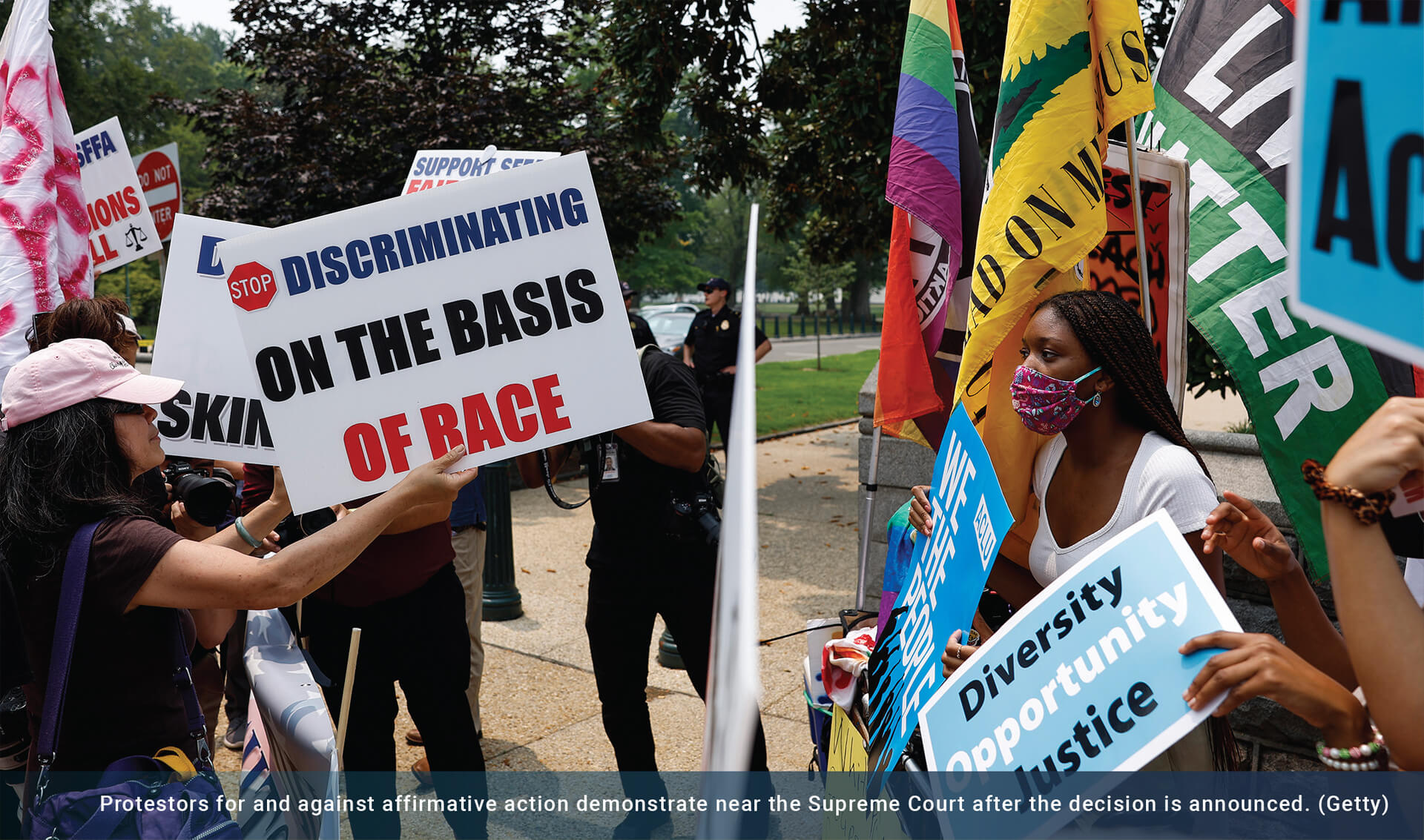
The official prefaced his email to Harvard’s dean by calling his own joke “really hilarious if I do say so myself!”
The memo—and the fact that Harvard fought so hard to keep it hidden—only serves to emphasize how important the Supreme Court’s Students for Fair Admissions decision is.
For years, Harvard and other schools asked the public to trust their motives—to believe they were discriminating against applicants with the best of intentions. That’s an ongoing trend: The more institutions inject race into their policies and systems, the more they demand the public trust that they’re advancing noble goals.
But Harvard’s secret memo is a vivid example of why we shouldn’t trust institutions to discriminate based on race. When we allow race-based admissions, a joke email like the Harvard memo is highly relevant: It speaks to hidden motives. But the Constitution eliminates the need to trust institutions to discriminate in the “right” way.
Unlike Department of Education officials, the Constitution empowers individuals, not institutions. No institution, no matter how elite or well-connected, should be allowed to pick winners and losers based on race.
The Supreme Court Weighs In
THE SUPREME COURT’S Students for Fair Admissions decision signals a return to the constitutional principles that protect individual rights
In the majority opinion, Chief Justice John Roberts wrote:
The entire point of the Equal Protection Clause is that treating someone differently because of their skin color is not like treating them differently because they are from a city or from a suburb, or because they play the violin poorly or well. ‘One of the principal reasons race is treated as a forbidden classification is that it demeans the dignity and worth of a person to be judged by ancestry instead of by his or her own merit and essential qualities’ (Rice). But when a university admits students ‘on the basis of race, it engages in the offensive and demeaning assumption that [students] of a particular race, because of their race, think alike’ (Miller).
Concurring, Justice Clarence Thomas wrote:
Given the history of discrimination against Asian Americans, especially their history with segregated schools, it seems particularly incongruous to suggest that a past history of segregationist policies toward blacks should be remedied at the expense of Asian American college applicants.
Critics of the ruling, including dissenting Justices, decried the majority as radical for stripping certain minority students of educational opportunities given to them through racial preferences.
In her dissent, Justice Sonia Sotomayor wrote:
At bottom, the six unelected members of today’s majority upend the status quo based on their policy preferences about what race in America should be like, but is not, and their preferences for a veneer of colorblindness in a society where race has always mattered and continues to matter in fact and in law.
Chief Justice Roberts had some harsh words for the dissenting Justices. He wrote:
Most troubling of all is what the dissent must make these omissions to defend: a judiciary that picks winners and losers based on the color of their skin. While the dissent would certainly not permit university programs that discriminated against black and Latino applicants, it is perfectly willing to let the programs here continue. In its view, this Court is supposed to tell state actors when they have picked the right races to benefit. Separate but equal is ‘inherently unequal,’ said Brown. It depends, says the dissent.
Justice Thomas also pointed out:
… these policies appear to be leading to a world in which everyone is defined by their skin color, demanding ever-increasing entitlements and preferences on that basis. Not only is that exactly the kind of factionalism that the Constitution was meant to safeguard against, see The Federalist No. 10 ( J. Madison), but it is a factionalism based on ever-shifting sands.
In light of this ruling, Harvard, UNC, and other colleges and universities will no longer be able to continue their perverse obsession with race—a huge win in the fight for equality.
In light of this ruling, Harvard, UNC, and other colleges and universities will no longer be able to continue their perverse obsession with race—a huge win in the fight for equality.
But it’s not the end of the fight: PLF is asking the Supreme Court to review our case challenging the use of racial proxies in the admissions process at Thomas Jefferson High School in Fairfax, Virginia. If schools shouldn’t be able to judge applicants by race, neither should they be able to hide race-based judgments behind proxies like ZIP Codes.
As Justice Thomas so perfectly said in closing remarks in his concurrence:
I hold out enduring hope that this country will live up to its principles so clearly enunciated in the Declaration of Independence and the Constitution of the United States: that all men are created equal, are equal citizens, and must be treated equally before the law. ♦
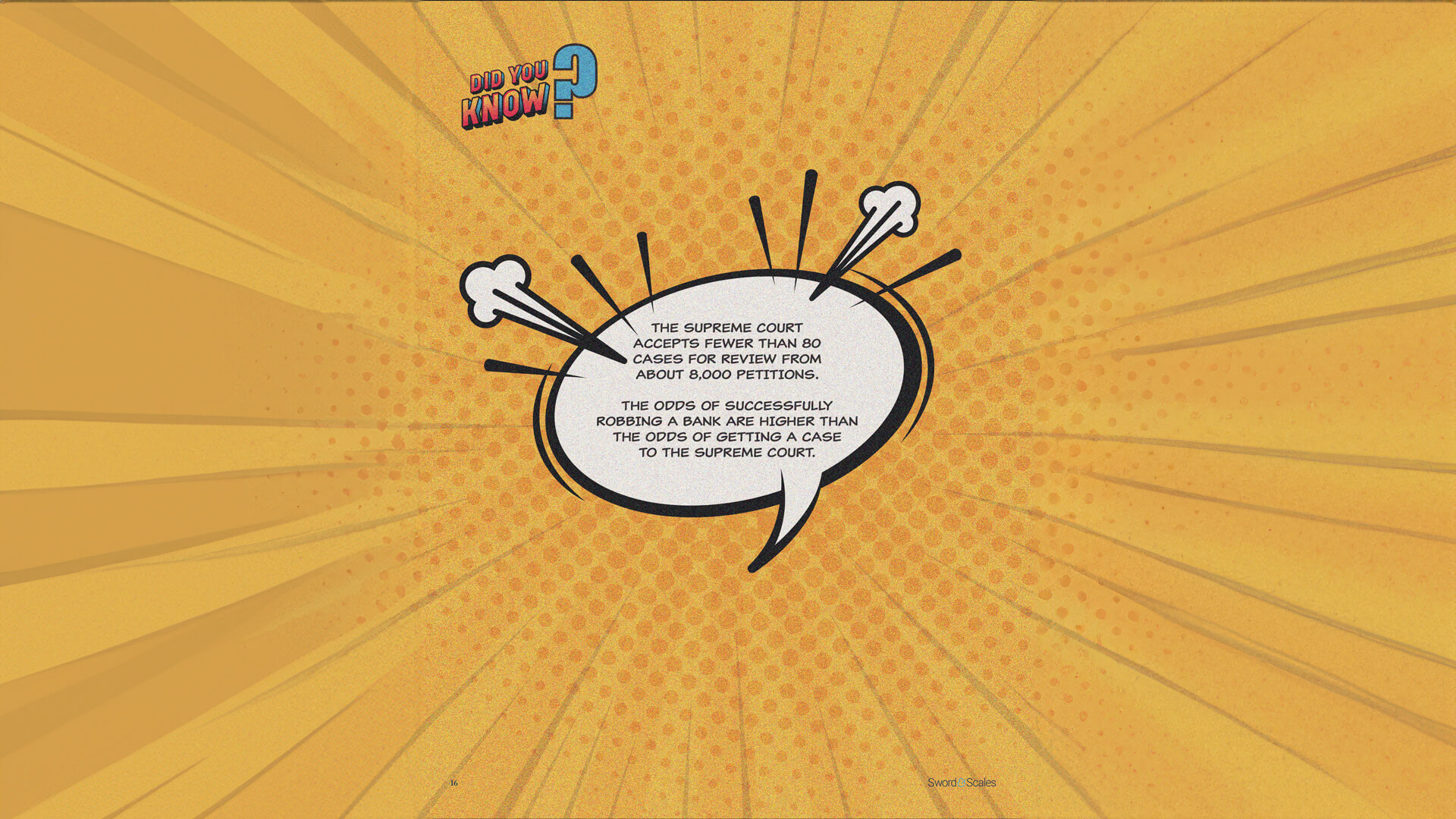
The Justice Who Warned the Supreme Court About ‘Administrative Authoritarianism’

Elizabeth Slattery
Senior Legal Fellow
ON NOVEMBER 21, 1945, Robert H. Jackson stood under bright lights in a courtroom in Nuremberg, Germany.
Jackson had been a U.S. Supreme Court Justice since 1941. But at the end of World War II, President Harry S. Truman asked Jackson to take a leave of absence from the Court to serve as chief U.S. prosecutor in the Nuremberg trials of Nazi leaders
For seven months, Jackson pored over evidence—including 25,000 photographs of Nazi atrocities—as he prepared to make his case.
The trials nearly hadn’t happened at all. Winston Churchill proposed simply executing the prisoners without a trial. The world was desperate for revenge.
But Jackson told President Truman that it was important “to punish only the right men and for the right reasons.” The Allies should put the Nazis on trial, Jackson argued—not a rigged trial with guaranteed convictions, but a true, legal trial. “We must establish incredible events by credible evidence,” he wrote in a report to President Truman.
This was deeply important to Jackson: the idea that even the world’s worst men should be given a fair hearing.
When Jackson stood to give the prosecution’s opening statement, he reminded the court that the defendants—“twenty-odd broken men,” as Jackson called them—would be tried fairly based on legal evidence. They would be given due process. He commended the Allied Nations for holding the trials. Their decision “to stay the hand of vengeance, and voluntarily submit their captive enemies to the judgment of the law, is one of the most significant tributes that Power has ever paid to Reason,” he told the court.
This was deeply important to Jackson: the idea that even the world’s worst men should be given a fair hearing.
Two years after successfully convicting the Nazis at Nuremberg, Jackson once again found himself making an impassioned case for due process and the rule of law.
This time, it was in a Supreme Court case about the power of federal agencies.
From a Farmhouse to the Bench
JUSTICE JACKSON WAS NO ENEMY of the administrative state. He was a New York Democrat who helped implement the New Deal.
Born in a farmhouse, Jackson attended only one year of law school before becoming a country lawyer in a small New York town. At just 21 years old, he was elected to the Democratic Party’s state committee, where he caught the attention of then-New York State Senator Franklin D. Roosevelt. The two men became friendly over the years as Jackson grew into an impressive trial lawyer.

When Roosevelt was elected president, he convinced Jackson to move to Washington, DC, and join his administration—first in the Treasury Department, then as U.S. solicitor general, then finally as attorney general in 1940.
“I wasn’t a member of the so-called ‘brain trust,’” Jackson later said of his years working for Roosevelt. “I never even went to college.” Despite this, The Washington Post called Jackson “the best spokesman for the New Deal policies, and in many ways the best all-around man in the Roosevelt circle.” Jackson wore impeccable three-piece suits, played poker with the president, invited janitors for drinks, and displayed a framed Rudyard Kipling quote in his office: He travels fastest who travels alone.
As attorney general, Jackson was tasked with investigating espionage and suspected sabotage. He wrestled with questions of when wiretapping was appropriate and when it violated the Constitution. “In the process of upholding democratic ideals, we must not unwittingly destroy or impair what we are … endeavoring to preserve,” he wrote.
He was attorney general for only a year. In 1941, Roosevelt nominated Jackson to the Supreme Court. “Associate Justice of the Supreme Court is a long way from the farm in Spring Creek,” Jackson told the president when he accepted the nomination.
A Nation at War
FIVE MONTHS AFTER Justice Jackson joined the Supreme Court, Japan bombed Pearl Harbor. America was now at war.
In early 1942, President Roosevelt signed an executive order forcibly moving Japanese Americans into relocation camps. If Justice Jackson had still been attorney general, he likely would have been involved in the executive order. His successor, Francis Biddle, approved the order and later regretted it. It’s impossible to know what Jackson would have done in Biddle’s shoes.
But we know what he did from the Supreme Court bench.
A man named Fred Korematsu refused to move from his home and sued the government. The case made its way to the Supreme Court, and in 1944, the Court voted 6-3 to uphold Roosevelt’s executive order. The majority opinion cited the judgment of military authorities who believed the relocation was necessary.
Jackson was one of the three Justices who dissented.
Despite his personal history with Roosevelt, Jackson condemned the relocation camps as unconstitutional. For him, the Court’s responsibility was to the law and the Constitution, not to military strategy. He didn’t think the Justices should defer to military experts: That was an abdication of the Court’s judicial duty. Fred Korematsu had not committed espionage, “and if any fundamental assumption underlies our system, it is that guilt is personal and not inheritable,” Jackson wrote. He continued:
[A] civil court cannot be made to enforce an order which violates constitutional limitations even if it is a reasonable exercise of military authority. The courts can exercise only the judicial power, can apply only law, and must abide by the Constitution, or they cease to be civil courts and become instruments of military policy.
It was a strongly worded dissent that sought to affirm the role of the judiciary as a check on government power.
And it wasn’t the last such dissent Jackson would write.
The Chenery Case
CHRISTOPHER CHENERY WAS one of the directors of a public utility holding company. Following the Wall Street Crash of 1929, Congress created the Securities and Exchange Commission and tasked it with, among other things, regulating the structure of public utility holding companies.
The SEC was subjecting him to an imaginary rule it had made up on the spot, simply because it didn’t like what he was trying to do.
Chenery’s company was required to submit a reorganization plan to the SEC. But every time Chenery submitted a plan, the SEC rejected it. Chenery owned controlling Class B shares in the company, and the SEC didn’t like that. It wanted all shares to be preferred stock. Under reorganization, preferred stockholders would be granted ownership of the company.
So Chenery did the logical thing: He bought preferred stock and resubmitted the reorganization plan
The SEC rejected it. The agency told Chenery that he and his family were not allowed to buy preferred stock in a bid to retain ownership after the reorganization—even though nothing in the SEC’s own rules or the law prevented it.
Chenery sued. The SEC was subjecting him to an imaginary rule it had made up on the spot, simply because it didn’t like what he was trying to do.
In other words, the agency was violating Chenery’s right to due process. Before the government can deprive you of life, liberty, or property, it must demonstrate that you have done something unlawful. That’s a principle dating back to Magna Carta in 1215. Due process is what prevents people from being thrown in jail at a king’s whim. The process matters as much as the quantity or quality of the government’s proof. You have a right to be judged in accordance with settled law. To put it another way: People can’t be expected to follow rules that don’t exist. As Justice Antonin Scalia said,
Rudimentary justice requires that those subject to the law must have the means of knowing what it prescribes. It is said that one of emperor Nero’s nasty practices was to post his edicts high on the columns so that they would be harder to read and easier to transgress.
Chenery v. SEC went to the Supreme Court twice. The SEC claimed that Chenery’s actions amounted to fraud. In Chenery I, the Supreme Court disagreed and ruled against the SEC. But Justice Hugo Black suggested in a dissent that the SEC could change its argument against Chenery and still divest the Chenery family of its preferred stock without needing to go through a formal rulemaking.
The SEC followed Black’s advice. When Chenery resubmitted his plan yet again, the agency again rejected it. Chenery’s case made it back to the Supreme Court in 1947. This time, in Chenery II, the Court ruled for the agency. According to the Court, the SEC could create new legal requirements through adjudication and apply them retroactively. In other words, it could decide on the fly that someone’s activity was not allowed.
For a man like Jackson, the decision was baffling. The Court was allowing federal agencies to act outside the bounds of law.
But he didn’t write a dissent immediately. The end of the Supreme Court term in June 1947 was chaotic. The Court announced its Chenery II decision on June 23 alongside 14 other decisions. Justices Jackson and Felix Frankfurter, the only two Justices who dissented in Chenery II, included only a short note that they were dissenting. They didn’t have time to write a full dissenting opinion at that time, they said. Their opinions would be added later.
And so Jackson spent the summer of 1947 holed up at Hickory Hill, his estate in northern Virginia, writing an impassioned dissent about “administrative authoritarianism.”
A ‘Rip-Snorter’ of a Dissent
TO JACKSON, THE SUPREME Court’s majority was giving federal agencies permission to deprive individuals of their rights without any kind of legislative approval or formal rulemaking. Agencies now had a blank check to act as lawmaker, judge, and executioner through adjudications.
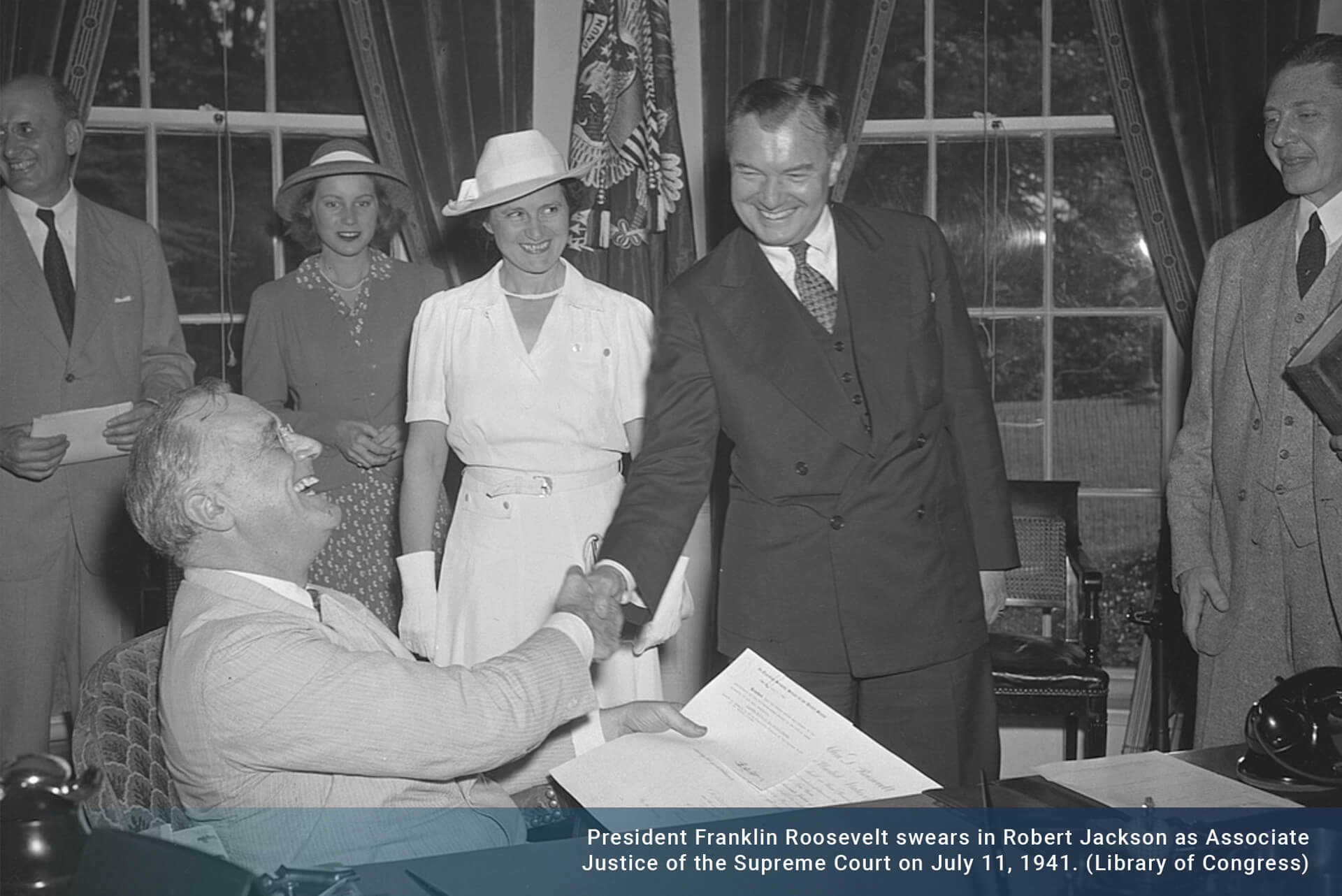
“I give up,” Jackson wrote in his dissent. “Now I realize fully what Mark Twain meant when he said, ‘The more you explain it, the more I don’t understand it.’”
The majority’s decision to defer to SEC expertise “makes judicial review of administrative orders a hopeless formality,” he wrote. The SEC had deprived Christopher Chenery of valuable property without compensating him—and the Court “expressly approves the taking.”
He added:
The truth is that, in this decision, the Court approves the Commission’s assertion of power to govern the matter without law… It is the first encouragement this Court has given to conscious lawlessness as a permissible rule of administrative action. This decision is an ominous one to those who believe that men should be governed by laws that they may ascertain and abide by, and which will guide the action of those in authority as well as of those who are subject to authority.
When Jackson sent a draft of his dissent to Frankfurter, Frankfurter wrote back: “Your Chenery dissent is a rip-snorter, or a sockdolager… or both, a rip & a sock! Leave it be, don’t… subtract any of the mother wit.” Frankfurter didn’t bother writing a separate dissent; he joined in Jackson’s
On the first day of the Supreme Court’s new term in October 1947, Jackson read his dissent from the bench. The Washington Post reported the next day that Jackson had “accused the Supreme Court of encouraging administrative lawlessness.”
Joe Postell, author of Bureaucracy in America, told Pacific Legal Foundation’s Dissed podcast that Jackson was particularly proud of his Chenery II dissent. In fact, Postell said,
as we went through his papers at the Library of Congress, we found a bunch of clippings that he saved from newspaper articles praising his dissenting opinion, and also letters that he’d received from concerned citizens, but also from former commissioners at places like the FCC and the FTC who wrote him after the Chenery II dissent was published, saying, “Thank you for standing up for the rule of law. Thank you for standing up for due process of law.” And these are former administrators who praised Jackson’s dissent. So I think Jackson knew that this was a really important opinion he was writing.
After Chenery II
CHRISTOPHER CHENERY WAS FORCED to liquidate his shares after the Supreme Court’s decision. He no longer had a controlling interest in his company. But Chenery found other pleasures: He became famous as a breeder of championship horses. One of his horses even won the Triple Crown. The horse’s name? Secretariat.
As for Jackson, he continued to warn against administrative overreach after Chenery II. In a 1952 dissent in a case involving the FTC, Jackson wrote:
Administrative agencies have been called quasi-legislative, quasi-executive or quasi-judicial… ‘[Q]uasi’ is a smooth cover which we draw over our confusion as we might use a counterpane to conceal a disordered bed.
For PLF attorneys and others working today to fight for due process and restore the constitutional separation of powers, Jackson remains a powerful influence. He was one of the first Supreme Court Justices to grasp the dangers of administrative overreach in post-New Deal America. His Chenery II dissent stands as a warning to courts today that if they allow agencies to act outside the law, they’ll be failing their most fundamental judicial responsibility.
For PLF attorneys and others working today to protect due process and restore the constitutional separation of powers, Jackson remains a powerful influence.
In 1954, Jackson had a heart attack and died. He was only 62 years old.
At the time of his death, Jackson was drafting a series of lectures he was scheduled to give at Harvard the following year. In one draft, Jackson wrote that there are really only two kinds of government a country can choose:
It may be governed by law or it may be governed by the will of one or a group of men. Law, as the expression of the ultimate will and wisdom of a people, has so far proven the safest guardian of liberty yet devised ♦

Coming Up at the Supreme Court: A Battle Over Judicial Deference

Nicole Yeatman
Managing Editor

Alison Somin
Legal Fellow
WHEN CODA WON BEST PICTURE at the 2022 Academy Awards, viewers were surprised. CODA is a quiet film about a deaf fishing family in Massachusetts. It stars an unknown lead actress and was made for under $10 million—a paltry budget, by Hollywood standards. Yet it beat out slick, star-studded movies like Dune, The Power of the Dog, and Don’t Look Up.
During his acceptance speech, CODA’s producer said it hadn’t been an easy film to shoot. On day one, “our cast and crew were supposed to be at sea at 4:00 a.m., fishing, when we were told a giant storm was about to hit us,” he said. He thanked the film’s incredible crew, “including the fishermen community in Gloucester.”
Immediately after the Oscars broadcast, Google searches for CODA spiked. Apple TV, which owns distribution rights, reported that CODA was now the most-watched film on their platform.
The fact that so many Americans have seen CODA is gratifying for two reasons.
One, it’s a small, crowd-pleasing drama about a young woman from a working-class family of deaf fishermen.
Two, the film includes a plotline about the family being forced to bring a federal official onto their fishing boat. That’s something that happens to real fishermen—and it’s now the centerpiece of an upcoming case at the Supreme Court.
Monitoring Fishermen
IN CODA, THE FISHERMEN are outraged when they find out they must bring “at-sea monitors,” or federal observers, onto their boats while they work.
“The feds are insisting,” one character, the fishermen’s processor at the wharf, tells them. “Observers are gonna come onto your boat to make sure you’re not breaking any rules.”
“That’s outta my pocket?” a fisherman asks incredulously when he learns fishermen must pay the salaries of monitors who are observing them. “So I gotta pay to have a spy on my boat?”
The cost, the fishermen quickly find out, is hundreds of dollars per day. “Come on,” one fisherman protests. “That’s gonna kill us.”
That’s more than we make in a day, the main character’s father, a deaf fisherman, says in sign language.
When the monitor spends the day on the deaf family’s fishing boat, she’s immediately a burden. She interrogates the father and son. She interrupts their fishing to ask for maintenance records. She ends up getting the father’s license suspended. The family, who already is struggling to make ends meet, is devastated.
The reality is as bad as the film.
A 2007 law says the National Marine Fisheries Service can force commercial fishing boats to bring a federal monitor onboard while fishing, but it doesn’t specify who should pay the monitor’s salary.
You might think it obvious: Federal monitors should be paid by the federal agency.
But the National Marine Fisheries Service disagrees. It interprets the law to mean that fishermen should pay the $700-per-day salary of monitors who are surveilling them.
For fishermen, it’s a double blow. Most commercial fishing vessels are small. Making room for a federal official can mean leaving behind a deckhand, which limits the day’s haul. Having to pay the salary of the monitor—who is watching while you work to ensure your compliance with regulations—lowers profits further, up to 20% by some estimates.
Put yourself in fishermen’s shoes. Imagine having to work all day with a federal observer mere feet away, monitoring everything you do. Now imagine you have to pay that person’s salary.
For Loper Bright Enterprises, a New Jersey-based fishing company, making fishermen foot the bill for federal monitors “adds insult to injury.” The company filed a lawsuit, arguing that Congress never gave the National Marine Fisheries Service permission to transfer the cost of monitoring to fishermen.
Imagine having to work all day with a federal observer mere feet away, monitoring everything you do. Now imagine you have to pay that person’s salary.
The Fishermen’s Lawsuit
LOPER BRIGHT ENTERPRISES’ case might seem like it affects only certain fishermen. But it’s far bigger than it seems.
First, if federal agencies can simply shift costs onto regulated people whenever they want, there are no practical constraints on what an agency can do. Agency budgets, as bloated as they are, provide at least some fiscal limits on regulatory activity. An agency can’t afford to send federal officials to every business to enforce compliance. But what if an agency decides it can just make businesses pay? Suddenly, the surveillance possibilities are virtually limitless.
That’s apparently what happened at the National Marine Fisheries Service: The agency experienced budget shortfalls and couldn’t afford the extra monitoring it wanted to do. So instead of cutting back on its regulatory agenda, it decided to make fishermen pony up. The agency’s own documents reveal that it knew forcing fishermen to pay monitors’ salaries was “highly sensitive” due to the “socioeconomic conditions of the fleets that must bear the cost.” But it did it anyway.
Second—and more importantly—the Loper case is fundamentally about whether courts should defer to federal agencies’ interpretation of the law. In other words, it’s about Chevron Deference.
A 1984 Precedent
SINCE MARBURY V. MADISON, the Supreme Court has exercised its power to review the legal basis of actions taken by the legislative and executive branches. The judiciary, as Chief Justice John Marshall established, says what the law is.
But in its 1984 Chevron v. Natural Resources Defense Council decision, the Supreme Court said it would defer to federal agencies’ interpretations of ambiguous laws, as long as the interpretations were “based on a permissible construction of the statute.” At first, the decision didn’t seem significant; Justice John Paul Stevens, who authored it, didn’t think it was a major departure from precedent. But executive branch attorneys saw it as a “godsend,” former Deputy Solicitor General Thomas Merrill writes in The Story of Chevron: The Making of an Accidental Landmark. The decision “was quickly seized on as a kind of mantra by lawyers in the Justice Department,” Merrill says, “who pushed relentlessly to capitalize on the perceived advantages the decision presented.” Under a broad reading of Chevron, agencies could take omissions in statutes as permission to fill in the blanks themselves—and courts would let them.
When courts cite Chevron, individuals and businesses are the ones who lose.
For example, take Buffington v. McDonough. In Buffington, the courts allowed the Department of Veterans Affairs to cheat an Air Force veteran out of three years of disability benefits he was rightfully owed. The VA claimed the veteran was supposed to formally restart his benefits after they were temporarily paused when his Air National Guard unit was called up. Even though by law the VA should have paid the benefits, the courts deferred to the VA’s interpretation and said it didn’t have to pay.

Or look at Pacific Legal Foundation’s case representing Arlen Foster against the Department of Agriculture. Arlen is a third-generation farmer in South Dakota. Back in 1936, Arlen’s father planted trees on the south side of the farm. Today the trees are quite tall, and every winter, they collect deep snow drifts that slowly melt until a puddle collects in a low spot on the farm field. In 2011, incredibly, the Natural Resources Conservation Service decided that they could regulate the puddle as a wetland under the Swampbuster Act. Worse, after Arlen hired experts and requested a review of the wetland designation, the agency repeatedly refused. It had a statutory obligation to review it under Swampbuster, but the agency interpreted the law in a way that allowed it to avoid its legal obligations. Nonetheless, the Eighth Circuit Court of Appeals cited Chevron and deferred to the agency.
There are countless other examples, stretching back decades—cases in which someone asked the courts to stop an agency from wrongfully interpreting the law, and the courts, citing Chevron, simply deferred to the agency.
Coming to the Supreme Court
WHILE LOWER COURTS CONTINUE to cite Chevron, the Supreme Court has refrained from applying it over the past five years. Even Chevron proponents have noted that it’s fallen out of favor with the current Supreme Court Justices. Yet Justices also refused to hear several recent cases which would have given the Court an opportunity to overturn Chevron.
Justice Clarence Thomas dissented from one such cert denial in 2020, arguing the Court should take the opportunity to review the controversial precedent. Chevron, he wrote, “rests on the fiction that silent or ambiguous statutes are an implicit delegation from Congress to agencies… Chevron compels judges to abdicate the judicial power without constitutional sanction.”
Last year, Justice Neil Gorsuch dissented from another cert denial. When courts apply a broad reading of Chevron, Justice Gorsuch wrote,
we outsource our interpretive responsibilities. Rather than say what the law is, we tell those who come before us to go ask a bureaucrat… We place a finger on the scales of justice in favor of the most powerful of litigants, the federal government, and against everyone else. In these ways, a maximalist account of Chevron risks turning Marbury on its head.
Finally, this year, the Supreme Court agreed to hear a case that could put Chevron on the chopping block… Loper Bright Enterprises v. Raimondo, which Cause of Action petitioned to the Court after the D.C. Circuit Court invoked Chevron in ruling against the fishermen.
Pacific Legal Foundation filed an amicus brief at the Supreme Court in support of Loper Bright. We also filed a petition for the Court to review our Foster v. USDA case. If the Court rules for Loper Bright and overturns Chevron, it likely will grant, vacate, and remand similar Chevron cases among its petitions—which means Arlen Foster would be among the first to experience the benefits of ending Chevron.
The Justices will hear oral arguments in Loper during the upcoming term. (Justice Ketanji Brown Jackson will recuse herself from the case because she was on the D.C. Circuit Court panel that ruled against the fishing company.)
A Fitting End for Chevron
FOR EVERYONE IN THE COUNTRY worried that unelected bureaucrats in the executive branch have too much power, Loper coming to the Supreme Court is a big moment. A case that began with monitoring fishing boats could now undo a doctrine the administrative state relies on to ratchet up its own power
Perhaps that makes sense. Atlantic fisheries are among America’s oldest industries, and they’re being smothered by federal regulations. If the showdown over Chevron could happen anywhere, it should happen in a case like this—where the cost of federal overreach for individuals is so evident, it was featured in an Oscar-winning movie.
Atlantic fisheries are among America’s oldest industries, and they’re being smothered by federal regulations.
One bit of trivia from the making of the movie CODA: Because much of it was filmed on fishing boats in the waters off Massachusetts, the film crew had to follow all the same regulations that normal commercial fishermen in the Atlantic follow—which means that one day, the CODA film crew actually had to bring a federal monitor on board. Because the boat could hold only ten people, the federal monitor displaced a member of the film crew.
For the crew, the incident likely confirmed that the unfair burden borne by Atlantic fishermen was a story worth telling.♦
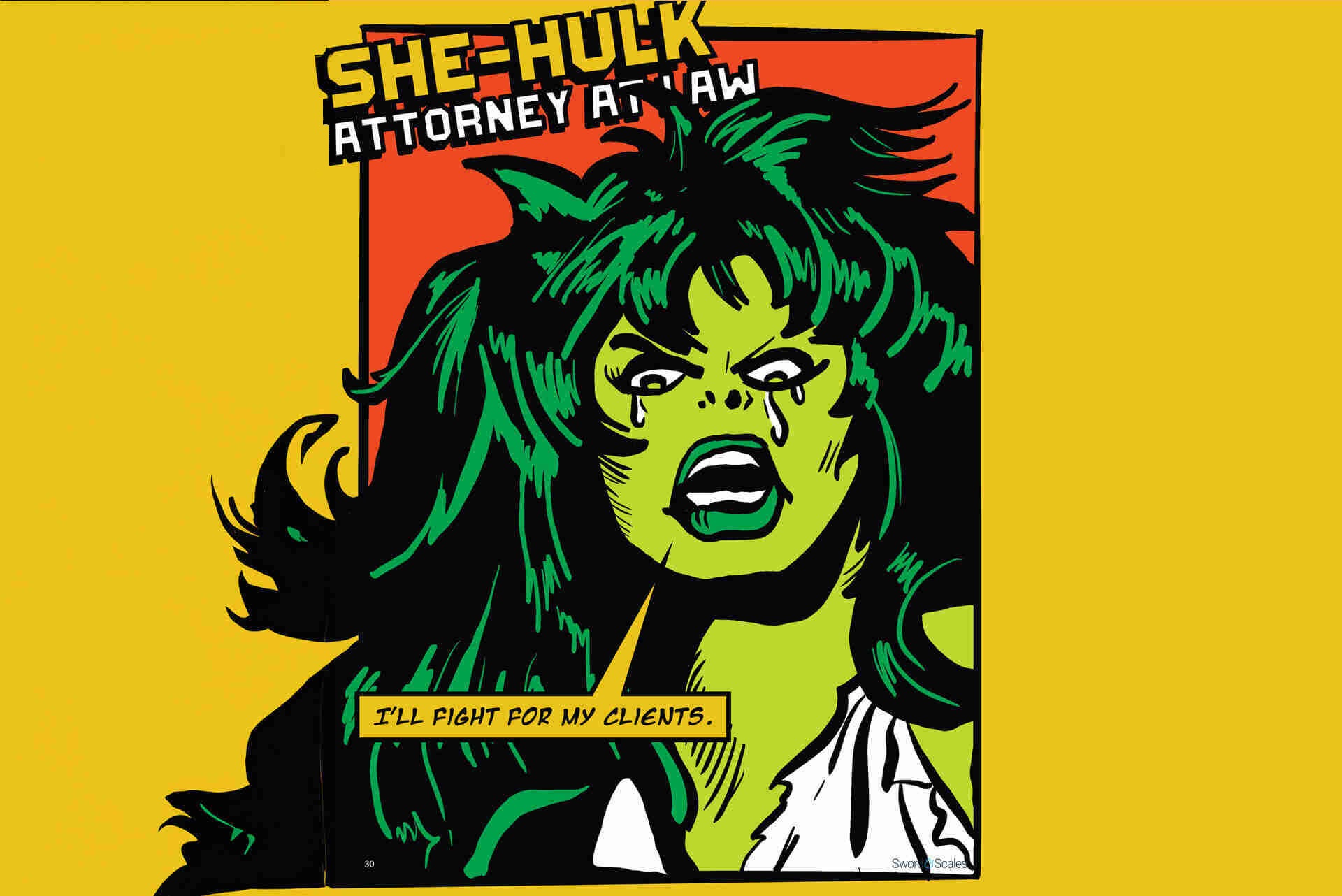
The Supreme Court Could Fix a 150-Year-Old Mistake

Larry Salzman
Director of Litigation
“FROM THE TIME MY SON WAS BORN, I knew he needed help.”
That’s what Dana, a New Orleans mother, admits in a signed declaration that recently was submitted to the Supreme Court.
Dana’s son displayed concerning behavior from a very young age. It was a lot for Dana to handle—and she also had two other children. She reached out to services that provide “respite care”: part-time help for parents and other caregivers who need occasional breaks. Respite care is a game changer for parents of special needs children. A good respite caregiver can make a struggling mom feel like she’s not alone.
But the services Dana found in New Orleans only added to her anxieties. “They treated my son like a number in the system,” she says. “They downplayed my concerns and observations and were insistent that my son had a simple form of ADHD.”
Meanwhile, her son’s behavior escalated to a point where Dana was unable to keep a job. “I lost everything and had to move into my mother’s home with my children,” she says. “I reached a point of such emotional and financial desperation that I considered giving my son up for adoption.”
It was, she says, “an unimaginable choice for any mother.” She was in “complete emotional anguish.”
Then, when her son was seven years old, Dana met Ursula Newell-Davis.
A Woman Trying to Save Her Community
URSULA IS A NEW ORLEANS social worker—but she’s more than that.
“People like her only come around once in your life,” says Makela, a recovering drug addict whose daughter was counseled by Ursula.
Ursula believes she has a calling: to work face-to-face with families and make a positive impact in their lives. She herself is a mother of three. One of her sons, L.J., is autistic. Her oldest son, Charles, was killed in 2015 in a drive-by shooting while visiting family in Washington, DC. Charles’ murder made Ursula think about the people who shot him: What if someone had intervened early in their lives?
“They treated my son like a number in the system,” she says. “They downplayed my concerns and observations and were insistent that my son had a simple form of ADHD.”
As a social worker, Ursula has seen teenagers with disabilities or behavioral problems fall into the wrong crowd and turn to crime. (According to the Office of Juvenile Justice and Delinquency Prevention, almost 70% of juvenile criminal offenders have at least one diagnosed mental illness.)
Dana says that Ursula saved her family.
When Ursula started working with Dana and her son, she sat down and listened to both of them. Dana felt like, for the first time, someone understood the complexity of her son’s case. Ursula accompanied them to appointments and guided Dana to resources. She even helped Dana’s other children.
“The fact that my son can live a stable life and my oldest daughter is now enrolled in medical school is a testament to Ms. Davis’ work,” Dana says.
Dana’s signed declaration is part of an appendix that was submitted to the Supreme Court in June. Pacific Legal Foundation is representing Ursula in a lawsuit against the State of Louisiana, with local help from the Pelican Institute for Public Policy. Ursula has been trying to open her own business providing respite services to parents like Dana—but the Louisiana Department of Health says no.
Louisiana Law
IN LOUISIANA, BEFORE you can get licensed to provide respite services, you must undergo something called a Facility Need Review (FNR). Four bureaucrats decide whether your services are needed in the community. During discovery, the state admitted it has no standards for deciding what level of services are needed, and no system for measuring the purported need.
Ursula was able to provide testimony about the need for more respite services in New Orleans. But the FNR committee still denied her application—because allowing Ursula to provide respite services would add to the Department of Health’s “regulatory burden,” it said.
In other words: Ursula can’t provide services to in-need families because the government doesn’t want the added work of regulating her business.
PLF and Pelican Institute now are asking the Supreme Court to review Ursula’s case. Denying a qualified person her right to earn a living cannot be the best way for Louisiana to conserve its resources. A state could use that justification to deny anyone virtually anything. “[A]rbitrarily discriminating between parties or depriving them of their constitutional rights can always be said to conserve governmental resources in some way,” our petition to the Court says. For example,
If there were fewer restaurants, the government could spend less on inspections. If there were fewer drivers, the government could spend less on roads, or DMV workers, or highway patrol. The way the government ensures health and safety is by enforcing health and safety regulations, not by limiting the number of qualified people who can lawfully
exercise their rights.
The petition also argues the Supreme Court should take Ursula’s case to make the freedom to earn a living central to civil rights law.
A proper reading of the Fourteenth Amendment prevents any state from abridging fundamental rights, including the right to work in a common and lawful occupation. There’s vast historical evidence that the amendment’s Privileges or Immunities Clause (“No State shall make or enforce any law which shall abridge the privileges or immunities of citizens of the United States…”) was meant to enshrine the right to earn a living into the Constitution. It was ratified in 1868, after the Civil War, when Congress’ priority was to protect the economic rights of former slaves. At the time, “privileges” and “immunities” were broadly used to refer to natural rights and liberties. Congressman John Bingham, one of the authors of the amendment, spoke of the liberty “to work an honest calling and contribute by your toil in some sort to the support of yourself[.]” During debates over the amendment, Congressman William Lawrence said:
It is idle to say that a citizen shall have the right to life, yet deny him the right to labor, whereby alone he can live. It is a mockery to say that a citizen may have a right to live, and yet deny him the right to make a contract to secure the privilege and the rewards of labor.
But five years after the Fourteenth Amendment was ratified, the Supreme Court made a grave mistake that robbed the Privileges or Immunities Clause of its meaning.
That mistake: the Slaughter-House decision of 1873.
The Slaughter-House Decision
LIKE URSULA NEWELL-DAVIS’ story, Slaughter-House begins in New Orleans.
In the late 1860s, the State of Louisiana handed a monopoly over the right to run a slaughterhouse in New Orleans to one company for twenty-five years. All butchers in the city would be forced to rent workspace at its slaughterhouse.
The state did have legitimate health reasons to regulate the butcher industry: New Orleans’ drinking water was contaminated with bits of blood and offal from upstream slaughterhouses. But instead of narrowly tailoring a solution to the problem—banning slaughterhouses from certain upstream areas of the city—Louisiana legislators decided to go along with the scheme to create a monopoly. (It helped that several of the schemers pushing for the monopoly were friends with Louisiana’s 26-year-old governor—and it also helped that they bribed several legislators.)
New Orleans butchers were furious. Most of them were French immigrants; they lacked political ties. Now, if they wanted to continue butchering livestock, they’d have to give up some of their earnings to the new monopoly company. The Butchers’ Benevolent Association protested that every man had the right “to accumulate property by his labor… without the control, domination, or direction of any other person or persons in the community[.]”
The butchers filed a series of lawsuits which were eventually consolidated at the Supreme Court as the Slaughter-House Cases. The butchers’ attorney argued that Louisiana’s creation of a slaughterhouse monopoly violated the Privileges or Immunities Clause of the Constitution’s new Fourteenth Amendment. Clearly, the butchers’ fundamental right to earn a living was being abridged, the lawyer told the Court.
But in a controversial 5-4 decision, the Supreme Court ruled that “privileges or immunities” applied only to certain federal rights, like access to navigable waters and habeas corpus. It didn’t protect “the citizen of a state against the legislative power of his own state,” the Court’s majority opinion said.
It was a puzzling decision that effectively stripped the clause of all its intended power. After the Civil War, Southern legislatures passed “Black Codes” and other labor regulations aimed at keeping formerly enslaved persons in effective servitude. The predominant purpose of the Fourteenth Amendment was to give federal authorities the power to stop state governments from abusing the rights of their own citizens.
The Butchers’ Benevolent Association protested that every man had the right “to accumulate property by his labor… without the control, domination, or direction of any other person or persons in the community[.]”
In a dissent, Justice Stephen Field wrote that the Court’s decision turned the Privileges or Immunities Clause into “a vain and idle enactment, which accomplished nothing, and most unnecessarily excited Congress and the people on its passage.”
Freedom of Opportunity
TODAY, CONSTITUTIONAL SCHOLARS and jurists of all political and ideological stripes agree with Justice Field: The Slaughter-House decision was a mistake. Akhil Reed Amar, a law professor at Yale University, describes Slaughter-House as “strangling the privileges-or-immunities-clause in its crib.” Laurence Tribe, a law professor at Harvard University, accuses the Court of “improperly gutting” the Fourteenth Amendment. Thomas McAffee, author of Constitutional Interpretation, calls Slaughter-House “one of the few important issues about which virtually every modern commentator is in agreement.”
Ursula Newell-Davis’ case affords the Supreme Court an opportunity to overturn its Slaughter-House decision and restore the Fourteenth Amendment to its intended purpose. It’s a long shot, admittedly. The Court has avoided revisiting Slaughter-House thus far. But in recent years, several Justices (and a growing number of lower-court judges) have openly acknowledged that the Privileges or Immunities Clause was written out of the Constitution by Slaughter-House.
Ursula is giving the Court a compelling reason to fix its 150-year-old mistake.
Every American deserves freedom of opportunity: the freedom to choose from the virtually infinite ways a person can earn a living. That’s the lifeblood of a free society. It’s what allows for grand-scale innovations that transform society across the globe, and it’s also what allows for the millions of smaller transactions happening every second, each of which might make a single person’s life just a little bit better.
If the State of Louisiana lets her, Ursula will make many families’ lives better.

She’ll provide a service that her community desperately needs. In another declaration submitted in Ursula’s case, a New Orleans foster mother describes struggling with existing respite services, which sent a different worker every time she called. Her foster child had cognitive and behavioral issues. The mother planned to adopt and began proceedings for a voluntary transfer of custody from the biological parents; but after failing to find consistent respite services, the mother ended up losing multiple jobs. She made the devastating decision not to adopt the child.
A state barrier is the only thing preventing Ursula from working with parents like this. One hundred and fifty years ago, in the same city Ursula calls home, a state barrier was the only thing preventing French butchers from doing their job.
Plus ça change.
In a short documentary from Stand Together, Makela tells filmmakers that her daughter’s grades rebounded after working with Ursula.
“The state really needs to open its eyes and listen to her,” Makela says. “Because she has a lot to say. And she has a lot of help to give.” ♦
Become a Hero for Liberty!


I’ve been butting heads with bureaucrats for over 40 years, and I still can’t get over the brazenness of the government… when the government hit my limit and I just couldn’t afford the fight anymore, PLF came in and finished what I had started. I want to make sure that individuals like myself who couldn’t otherwise afford to fight back have the resources to do so.

Jan & Mike Mead
PLF Legacy Partners

You are invited to join our growing force of Legacy Partners by adding PLF to your estate plans.
Contact Jim Katzinski, Gift Planning Officer, at (916) 288-1395.
